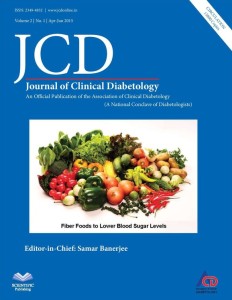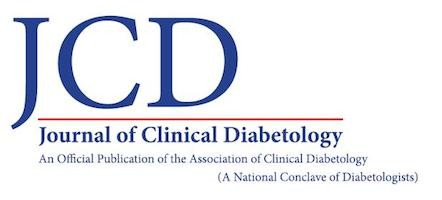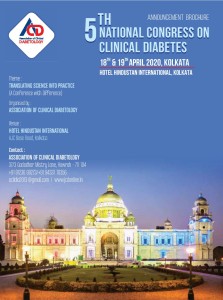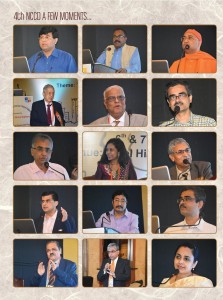
Potential Benefits and Concerns with Measuring 1, 5-Anhydroglucitol as a Marker of Glycemia
Nishita Meshram, Dr. Manish Bothale, Dr. Unnikrishnan AG
Levels of 1, 5-anhydroglucitol (1,5-AG) have long been postulated to be a measure of post-meal
glucose excursion and 1,5-AG existsin a large pool in our body. In case of glucosuria due to hyperglycemia
the renal tubular reabsorption of 1,5-AG is inhibited and its concentration in the serum decreases. The level
of 1, 5-anhydroglucitol can be an alternative to HbA1c, which is a standard index for glycemic control, and
for monitoring the pattern of glycemic excursions in patients with well-controlled and moderately controlled
type 2 diabetes. The 1, 5-AG assay reflects glycemic excursions in the postprandial state more precisely than
some other methods available for the same. A test for measuring 1, 5-AG has received US FDA approval
for monitoring short-term glycemic control as early as in 2003. This article refers to the source of 1, 5-AG,
its structural similarity to glucose, its measurement, its role in improving patient care and future aspects as
well as concerns.
Pathophysiology of Insulin Resistance
Dr. Shalini Jaggi, Dr. Sudhish Sehra, Dr. Devendra Sehra
Insulin resistance is the reduced ability of insulin to perform its normal physiological functions, and hence greater than normal amount of insulin is eventually required to obtain a quantitatively normal biological response.
Management of Adult Diabetic Patients Undergoing Surgery
Prof. Arvind Mishra, Dr. Varun Kumar Singh, Prof. Ravi Misra, Dr. Shilpa
Diabetes seriously interferes with surgical procedures and in turn surgery also seriously interferes with diabetic control. Metabolic perturbations observed as release of stress hormones added up with marked insulin resistance lead to altered glucose homeostasis resulting in severe hyperglycemia. Associated comorbid states further fuel this prevailing volatile state. Added to this misery is lack of definite guidelines regarding acceptable glycemic range in perioperative period. Also relation of glycemic state to wound healing and various insulin regimen is not established so far. A very clear, logical, calculated and planned strategy remains the need of the time to sail through this difficult and unpredictable situation. The management goal is to optimize metabolic control through close monitoring, adequate fluid and calorie repletion, judicious use of insulin to maintain desirable glycemic state and avoidance of hypoglycemia.
Pioglitazone and Bladder Cancer in India, a Real Threator Man-Made Fiasco: A Review
Prithwijit Banerjee, Karthik VP, Kishan PV
Pioglitazone is an oral anti-diabetic agent that, in the presence of insulin resistance, increases hepatic and peripheral insulin sensitivity, thereby inhibiting hepatic gluconeogenesis and increasing peripheral and splanchnic glucose uptake. Pioglitazone is generally well tolerated; however some preclinical in vivo studies and limited human data suggest a possible increased risk of bladder cancer with pioglitazone therapy. Therefore, we sought to perform a systematic review to evaluate the magnitude of this association and the quality of the supporting evidence. Based on the available data, pioglitazone still appeared to be an important option either as monotherapy or in combination, considering its efficacy, safety and cost especially among Indians diabetic patients. Good glycemic control is more important than routine cystoscopy among the pioglitazone users, although patients complaining of urinary symptoms must undergo detailed investigations for bladder cancer. Of course, individuals with any bladder malignancy, stand as a contraindication to initiate pioglitazone.
Overweight and Obesity Among Hospital in-Patients
Lakshmi Gumpeny, YJ Visweswara Reddy, GR Sridhar, Suresh Krishnamurty
Obesity is well known to be associated with adverse health events. However, there is little information about prevalence of overweight and obesity in individuals who are admitted for management of medical conditions. To provide initial data on the pattern of overweight and obesity among those admitted in a medical unit from a medical college located in a rural area of southern India, the present study was carried out.
Pattern of Loss of Glycemic Control in Indian Type 2 Diabetes Patients: An Observational Study
Dr. Manoj Chawla
The aim of the study was to determine pattern of loss of glycemic control in Indian type 2 diabetes patients. Methods: An observational registry, the study included 64 type 2 diabetes patients, divided in four groups based on baseline HbA1c values: group 1 (<6.5%, n = 17), 2 (6.5-6.9%, n = 11), 3 (7.0-7.9%, n = 21), 4 (e” 8%, n = 15).
Correlation of Inflammatory Markers and Dyslipidemia with Carotid Intima-Media Thickness in Type 2 Diabetic Subjects
Mukhopadhyay Saptarshi, Banerjee Samar, Bhattacharya Kingshuk
Creactive protein (CRP) and ESR are well-known inflammatory markers. Dyslipidemia are potent risk factors for cardiovascular disease, and carotid intima-medial thickness (CIMT) denotes subclinical atherosclerosis. Our aim was to assess the correlation between them in diabetic subjects. Materials and Methods: In this prospective observational study, we selected 78 subjects with type 2 diabetes and dyslipidaemia. The study period was 6 months. Carotid intima-medial thickness of the subjects was measured. The values correlated with the risk markers.
Journal Watch
The risk for development of T2DM in patients after gestational diabetes (GDM) is well established. But the researchers here studied the impact of high maternal weight on further cardiovascular disease in a population of more than 240,000 Canadian singleton deliveries over 10 years.T2DM developed in 36% of overweight patients who had GDM, 18.8% of patients who only had GDM, and 4.8% of patients who were only overweight. A similar pattern was seen in the development of hypertension and cardiovascular disease in these groups. High maternal weight and GDM were independent risk factors for hypertension and cardiovascular disease, but high maternal weight compared to GDM appears to be stronger.
Quiz
Announcement




